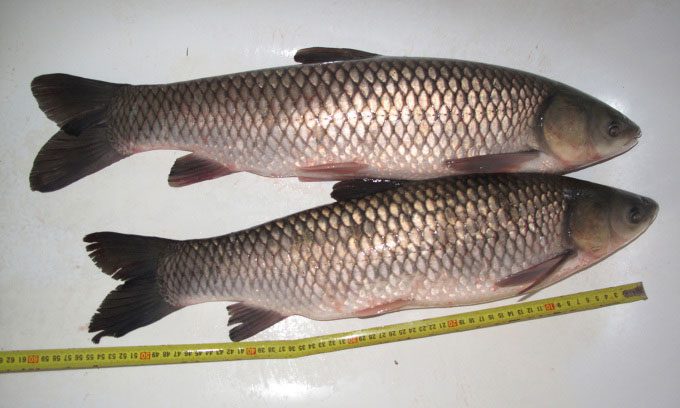Scientists Create a New Breed of Grass Carp with Reduced Bone Risks, Minimizing Choking Hazards
Fish bones getting stuck in the throat is a common issue that leads individuals to emergency rooms or clinics in Asian countries. To address this problem, a research team at Huazhong Agricultural University in Wuhan, Hubei Province, has developed a new breed of grass carp that lacks small bones or bones embedded in the flesh, as reported by ECNS on March 20.

Adult Grass Carp. (Photo: Dezidor/Wikipedia)
Grass carp is a popular freshwater fish in Asia, often steamed or grilled for its tender and delicious meat. However, it contains many small bones that can easily become lodged in the upper digestive tract of consumers. The research team, led by Professor Gao Zexia, head of the molecular breeding laboratory at the Fisheries College of Huazhong Agricultural University, has tackled this issue by developing a new fish breed.
Normally, mature grass carp have over 100 small bones. In contrast, the new breed of grass carp has no small bones, possessing only a spine and rib bones. Small bones, which are essentially ossified tendons within the diaphragm, are often thin and sharp. Many popular farmed fish worldwide have small bones, especially large freshwater species like grass carp, silver carp, and barramundi, which are commonly farmed in China.
The low farming costs combined with high nutritional value have made herbivorous grass carp the most widely farmed fish in China in recent years. In 2022, China’s annual production of grass carp reached 6 million tons, accounting for one-fifth of the country’s total freshwater fish output. However, the presence of many small bones is a significant drawback.
Li Mingcheng, a student at the University of Technology and Food Science at Huazhong Agricultural University, sampled the boneless fish and noted that the meat is more tender. The new breed also does not compromise nutritional value.
Gao has been researching boneless fish breeding since 2012, when he received his doctorate. After over a decade of effort, Gao and his colleagues identified a key gene that controls the development of small bones in fish and successfully developed the first boneless barramundi in 2022.
According to Gao, it typically takes 2 to 3 generations to develop a fish breed that is 100% boneless. Through continuous screening, only those individuals without small bones are used for breeding the next generation. “Without small bones, there’s no need to worry when eating fish,” Gao shared about his motivation.


















































